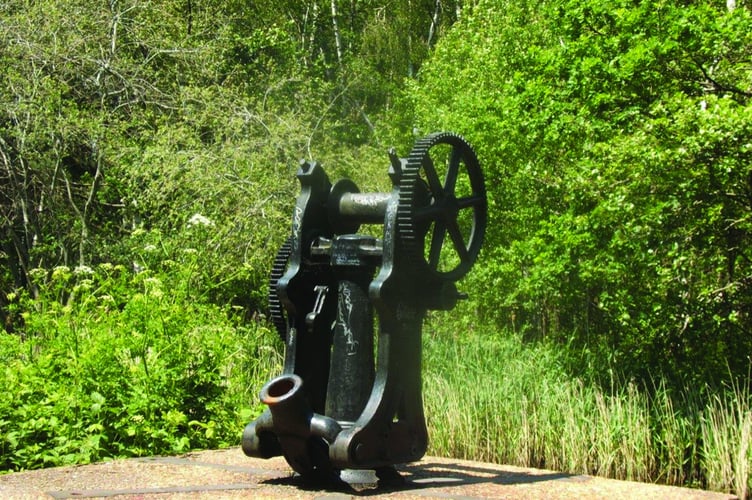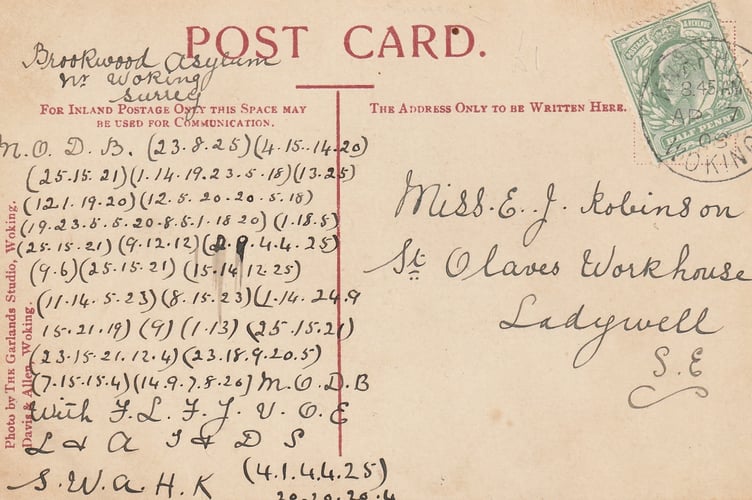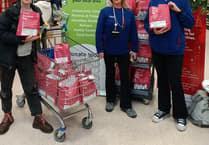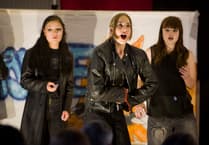HAVE you noticed the remains of a crane beside Monument Bridge, which crosses the Basingstoke Canal at Woking? This week’s Peeps into the Past explains all.
The canal was constructed in the 1790s and is regarded as one of the first agricultural canals that transported produce from Hampshire to London, and then coal and manure back.
A notice was issued in 1794 listing 10 wharves that would receive goods along the canal. The wharves were at Basingstoke, Basing, Odiham, Winchfield, Crookham, Farnborough, Ash, Frimley, Pirbright and Horsell. There are few indications today at any of these locations that once there were cranes in place to assist cargo landing.
During the 19th century, numerous wharves were built in Woking to allow barges to unload. The cargo was mainly timber for merchants C Spanton and coal for the gasworks.
The Horsell nurserymen and coal merchants Cobbetts used the Horsell wharf.
The crane whose remains are in Woking was a relatively late arrival in the canal’s history, as Peeps researcher Mark Coxhead has discovered.
In the 1930s, a contract was arranged to deliver wire coils by barge to a manufacturer of wire nails near Monument Bridge. The firm was a subsidiary of Guest, Keen & Nettleford, whose headquarters were in Birmingham.

Woking was selected as a manufacturing site in the South. A crane was required to unload the coils from the barges, and a suitably sized one was standing disused alongside the military railway sidings at Ash Lock.
The crane, built by Messers Tangye of Birmingham, was dismantled and re-erected at Woking, and used to unload the coils onto small electric trucks that then ran up the road into the industrial area and the factory.
However, it was only used for a few years. Just before the Second World War, Guest, Keen & Nettleford decided to centralise its nail manufacturing in Birmingham, so production at Woking ceased.
Only the base of the winding gear of the crane remains, as the timber jib rotted away some years ago.
Coded message is cracked
THE coded message written on the back of a vintage postcard, sent by a patient at Brookwood Asylum to an inmate of a workhouse in London – featured recently in Peeps – has been cracked.

Several readers were kind enough to tweet an answer – many thanks for all your efforts. Reader Rebecca Porter emailed to say: “It’s a very straightforward alphabet /number cypher and reads: ‘Why don’t you answer my last letter sweetheart? Are you ill Biddy? If only you knew how anxious I am you would write. Goodnight’.
“Then in brackets: ‘Daddy’ and something below that in brackets I can’t make out. And I assume SWAHK is ‘sealed with a humble kiss’. So, quite a sad situation, maybe.”
Mark Coxhead also deciphered it, so I asked him how he did it. He said 1 means the letter A, 2 means B and so on to 26 meaning Z.
If you have some memories or old pictures relating to the Woking area, call David Rose on 01483 838960 or drop a line to the News & Mail.
David Rose is a local historian and writer who specialises in what he calls “the history within living memory” of people, places and events in the west Surrey area covering towns such as Woking and Guildford. He collects old photos and memorabilia relating to the area and the subject, and regularly gives illustrated local history talks to groups and societies. For enquiries and bookings please phone or email him at: [email protected]

-call-handlers.jpeg?width=209&height=140&crop=209:145,smart&quality=75)


.jpeg?width=209&height=140&crop=209:145,smart&quality=75)